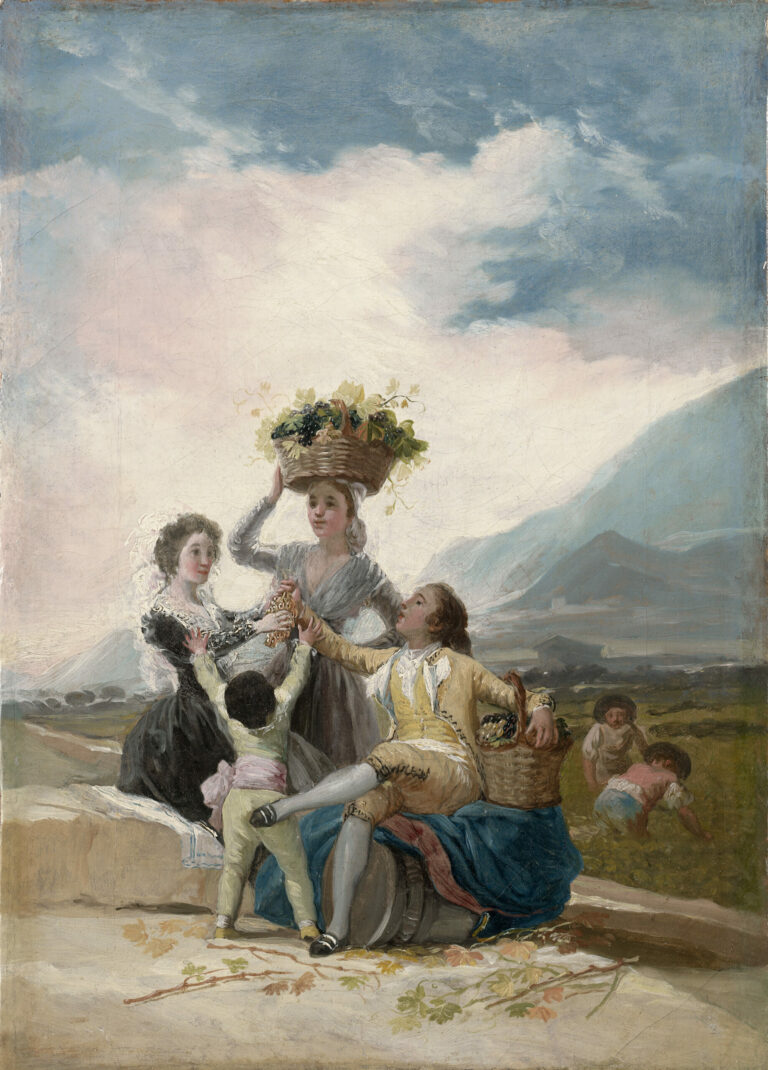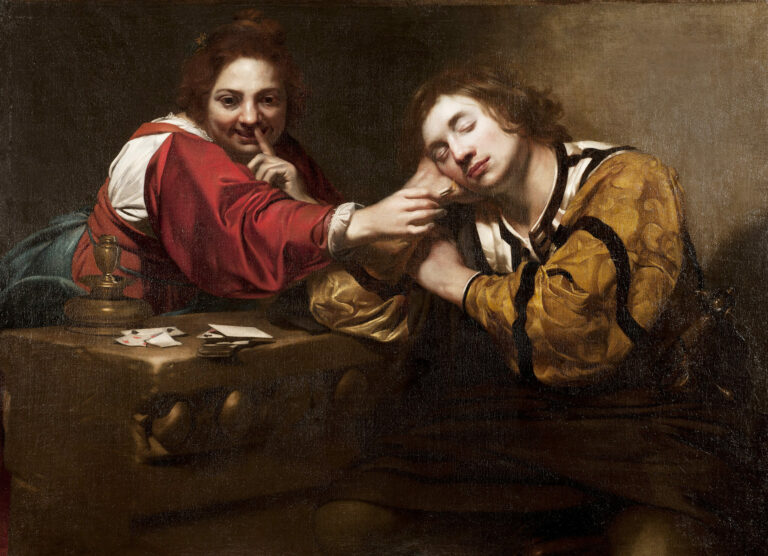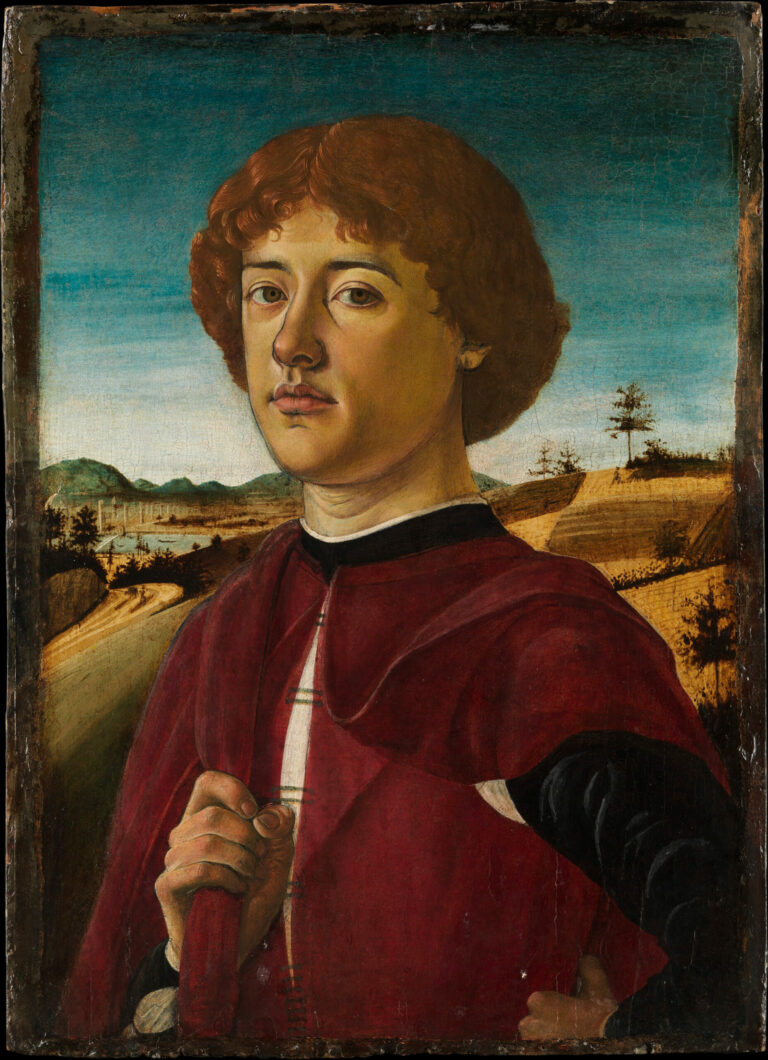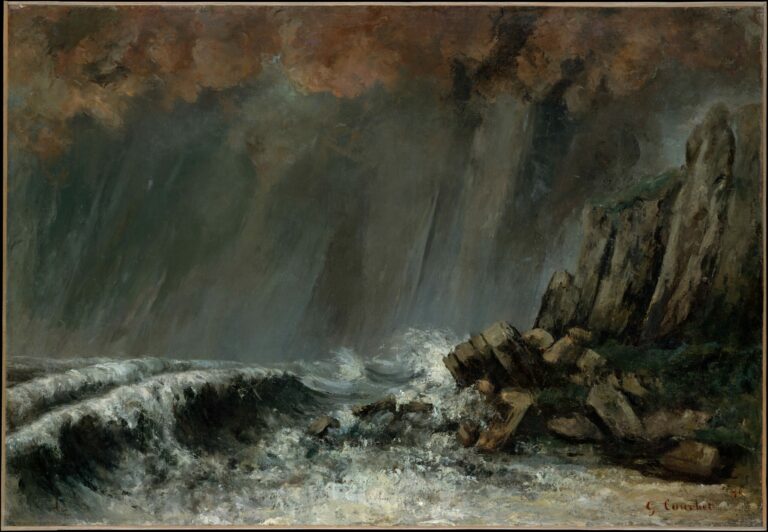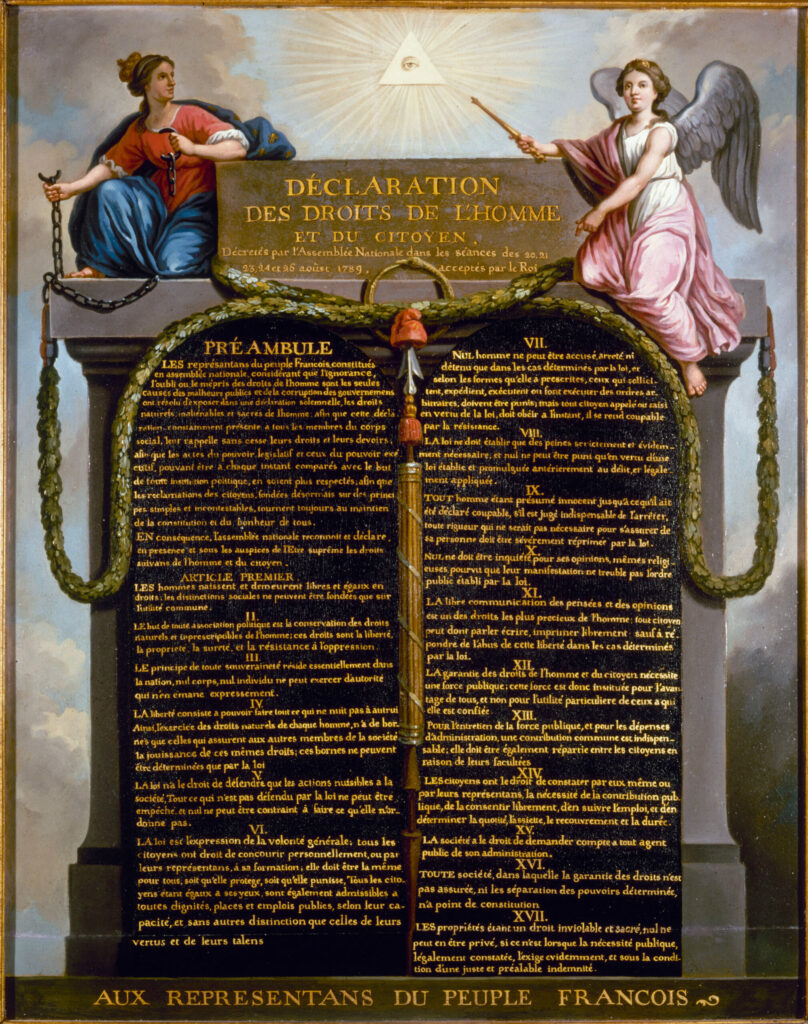
Declaration of the Rights of Man and of the Citizen (c. 1789). This allegorical composition by Jean-Jacques-François Le Barbier constitutes a crucial testimony to French revolutionary iconography.
The work translates the founding ideals of 1789, orchestrating a solemn staging around the historic text. Two female figures symbolically frame the preamble: on the left, Monarchy holding the broken chains of Tyranny evokes liberation from despotism, while on the right, the Genius of the Nation brandishes the scepter of new Power.
Masonic symbolism permeates the whole through the presence of the triangle and the divine radiating Eye at the summit, embodiment of Providence and enlightened Reason.
The lictor’s fasces topped with the Phrygian cap, placed at the center of the composition, unites ancient republican references with contemporary revolutionary symbols. The seventeen articles confer an almost sacred solemnity to the ensemble.
This work is intended to popularize the new democratic principles among the French people.
To learn more
- Declaration of the Rights of Man and of the Citizen, by Jean-Jacques-François Le Barbier, author of the model, c. 1789
- 71 x 56 cm, oil on wood
- Paris Musées, Musée Carnavalet, Histoire de Paris
- https://www.parismuseescollections.paris.fr/fr/musee-carnavalet/oeuvres/declaration-des-droits-de-l-homme-et-du-citoyen-4
- The full text of the Declaration of the Rights of Man and of the Citizen
Jean-Jacques-François Le Barbier, known as the Elder (1738-1826), French painter and engraver, perfectly embodies the committed artist of the revolutionary period. Trained in the academic tradition of the 18th century, he knew how to adapt his talent to the political demands of his time, becoming one of the principal illustrators of revolutionary ideals. Specialized in history painting and allegorical compositions, Le Barbier excelled in the visual translation of Enlightenment philosophical concepts. His work testifies to this capacity of artists of the period to put their art at the service of political and social transformations.

